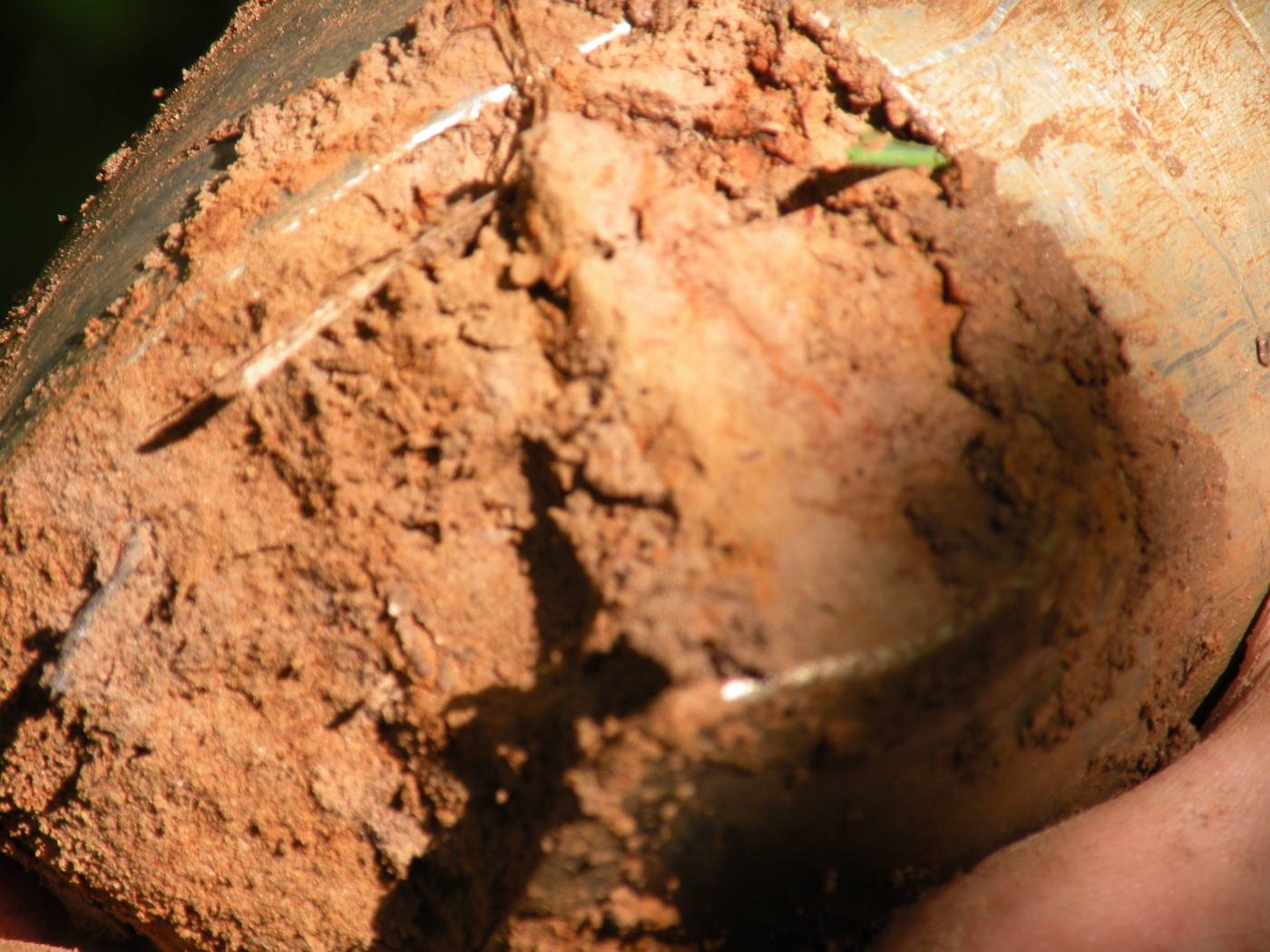Interested in Systems/ATUs?
Get Systems/ATUs articles, news and videos right in your inbox! Sign up now.
Systems/ATUs + Get AlertsSoil color is often used to determine seasonal high water table (SHWT) for system design. The soil treatment area bottom (or infiltrative surface) must be kept a certain distance above the SHWT according to code.
The most common way to determine the SHWT is to look for the first occurrence of gray colored (low chroma) redox depletions or mottles. Some codes may use the first occurrence (or a specified percentage) of red (high chroma) redox concentrations or mottles as well as the gray colors. It is important to know what methods are specified in the code in the area one works. Furthermore, if the entire soil is gray it is likely that soil is saturated for long periods of time throughout the year.
The gray color occurs when coatings of rust (iron oxides) on soil particles are removed (washed off) when the soil is wet. This is similar to the way one can remove the red candy coating on chocolate candy by placing it in a glass of water. Once the coating is removed, it will not recoat the particle. The particle remains gray even when the SHWT drops during a portion of the year. An increase in the red color in the form of concentrations (i.e., more red) may indicate the height that the water table (or saturation) rises periodically. Think of these features as representing a bathtub ring. Because these colors are relatively permanent in the soil, they are used for SHWT estimation.

From an installation perspective, it is important to recognize these colors and their meanings. First, if the trench bottom is installed too close (or within) the SHWT zone, treatment will be drastically reduced because the soil will be saturated. Saturated soil contains less oxygen and will not be aerobic. Because treatment relies on aerobic soil conditions, treatment is reduced. Second, soils are likely variable across the landscape. If a horizon becomes restrictive, saturation may occur in one spot of the soil treatment area. The soil in that location will become grayer due to that change. A conscientious installer will look for these color changes and may need to consult the evaluator/designer if any are observed.
Depth to limiting conditions
Depth to a limiting condition (such as shallow groundwater or rock) should be clearly recorded on the soil log. The depth to these features affects water acceptance by limiting the amount of liquid that can be moved through and away from the system. It is not uncommon for the depth to bedrock to vary considerably in a short distance. The installer should become familiar with the local bedrock. Once again, if during the installation the depth to any limiting condition (bedrock, SHWT or unsuitable horizon) is observed to be less than specified on the plan, it is the responsibility of the installer to contact the appropriate personnel to get further guidance on the issue.
The depth to free water (saturation) at the time the soil/site evaluation was performed should be noted on the soil log also. If this was higher than the depth to the morphologic indication of saturation (occurrence of gray colors), the design should reflect that observation. This would be noted by using the depth to the observed water table for design purposes rather than the SHWT estimated by soil color. Depth to saturation should also be noted during installation.
Trenches should never be installed in saturated soil. If the trench bottom excavation is saturated, installation should cease and the designer/evaluator should be consulted. Furthermore, if any excavation contains free water, additional steps to dewater the site may be needed. Also some soils are much less stable when saturated, so additional excavation safety measures must be considered.
About the author
Sara Heger, Ph.D., is a researcher and educator in the Onsite Sewage Treatment Program in the Water Resources Center at the University of Minnesota, where she also earned her degrees in agricultural and biosystems engineering and water resource science. She presents at many local and national training events regarding the design, installation and management of septic systems and related research. Heger is the President of the National Onsite Wastewater Recycling Association and she serves on the NSF International Committee on Wastewater Treatment Systems. Ask Heger questions about septic system design, installation, maintenance and operation by sending an email to kim.peterson@colepublishing.com.






